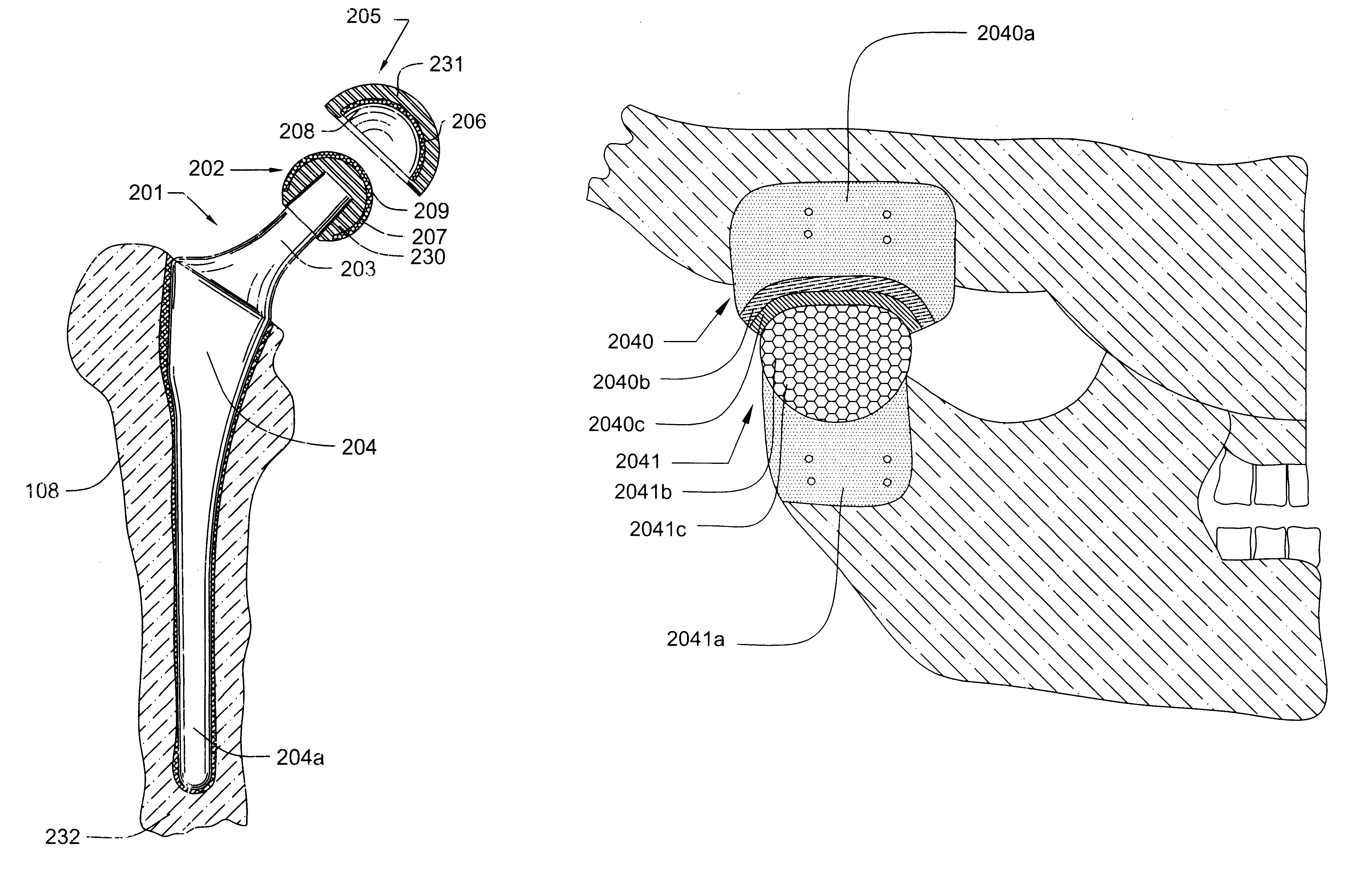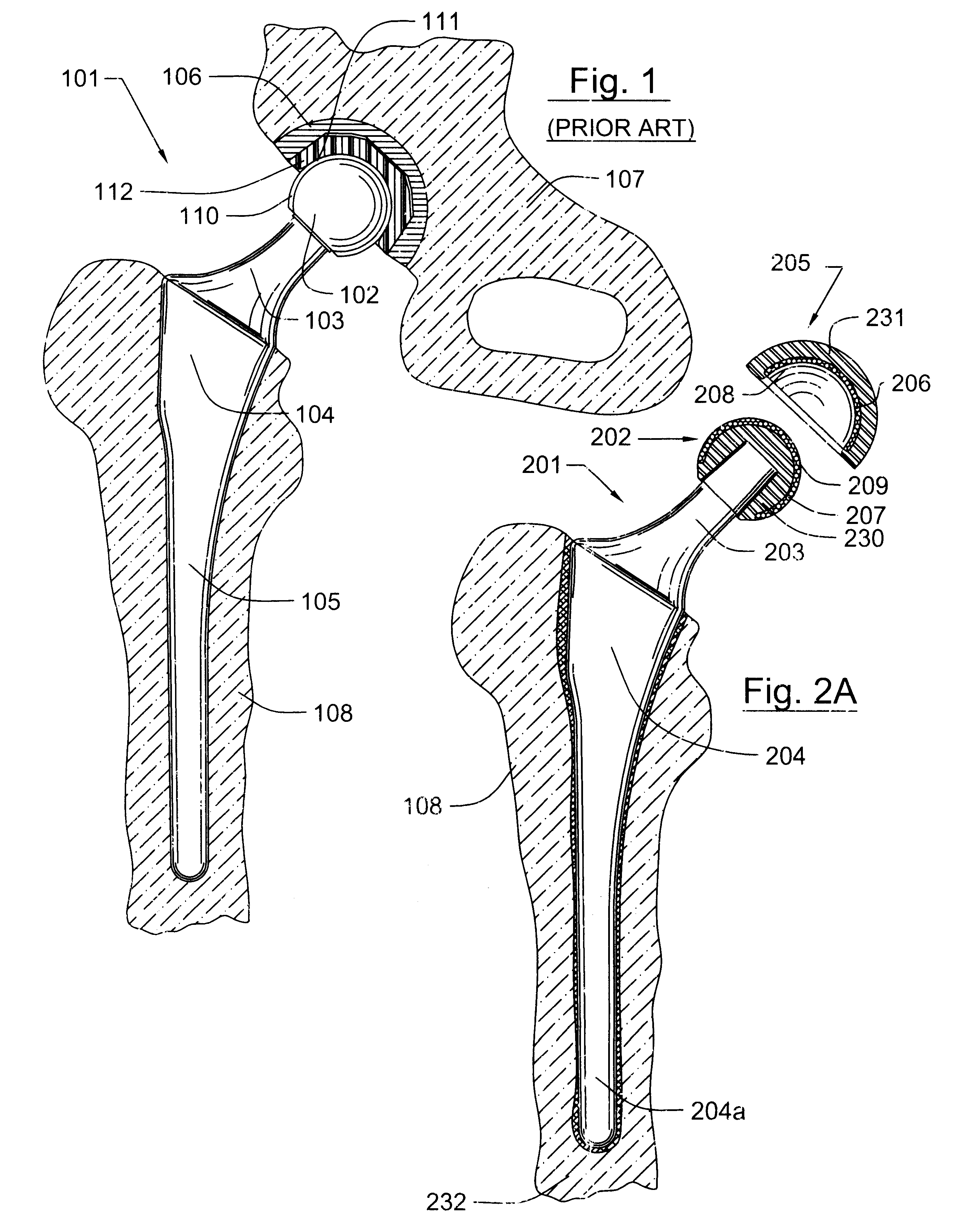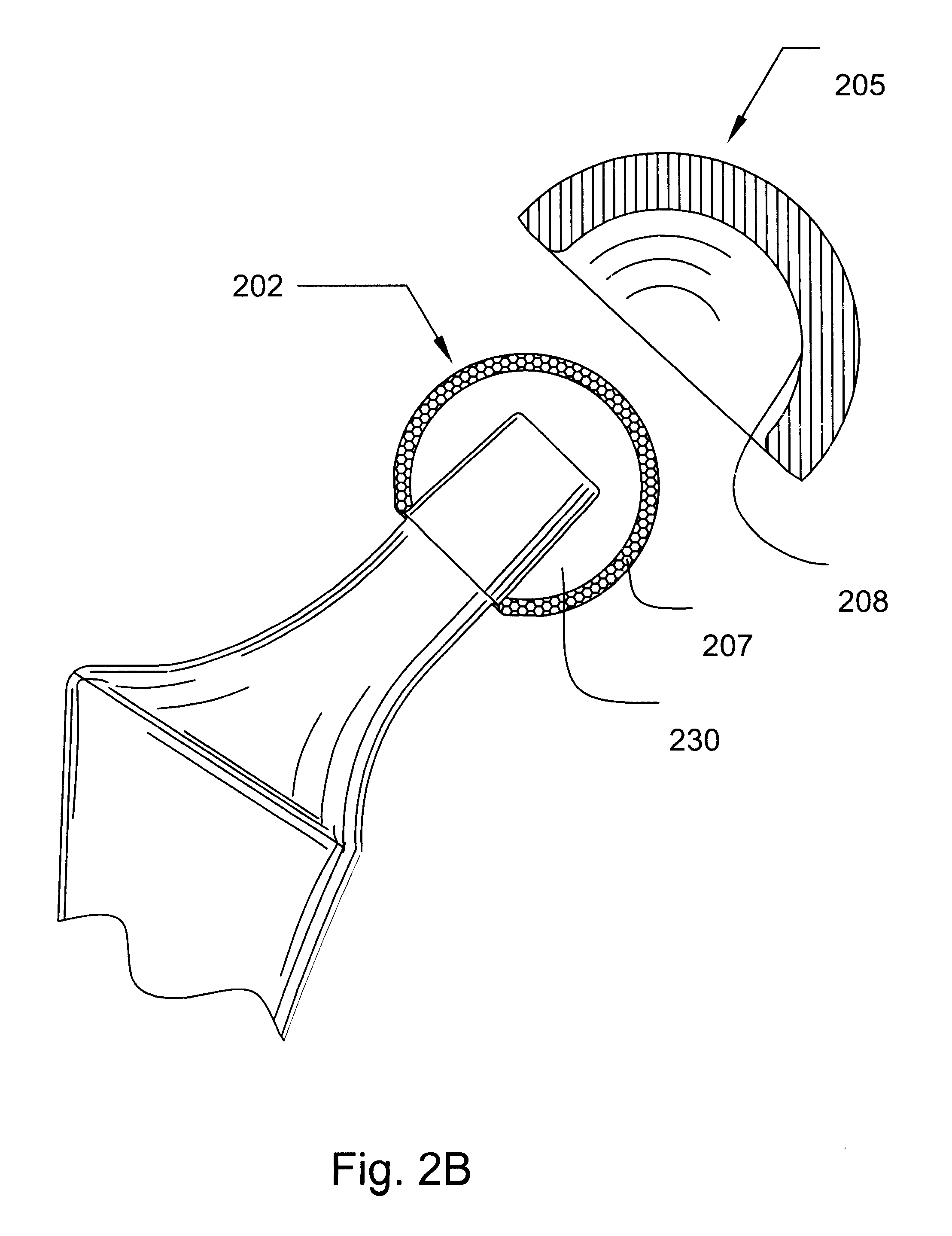In each of these cases, there is insufficient ingress of
solvent-catalyst
metal via the sweep mechanism to adequately mediate the
sintering process as a
solvent-catalyst.
When
sintering diamond on a substrate with an interface boundary layer, no
solvent-catalyst
metal from the substrate is available to sweep into the diamond table and participate in the
sintering process.
However, in the absence of a substrate
metal source, the solvent-catalyst metal for the diamond sintering process must be supplied entirely from the added
metal powder.
At present, these typically are not as strong or durable as those fabricated with the sintering process.
It is difficult to achieve and maintain desired component shape using a sintering process because of flow of
high pressure mediums used and possible deformation of substrate materials.
Another
disadvantage of sintering is that it is difficult to achieve some geometries in a sintered polycrystalline diamond compact When CVD or PVD are used, however, the
gas phase used for carbon radical deposition can completely conform to the shape of the object being coated, making it easy to achieve a desired non-planar shape.
Another potential
disadvantage of sintering polycrystalline diamond compacts is that the fmished component will tend to have large residual stresses caused by differences in the coefficient of
thermal expansion and modulus between the diamond and the substrate.
While residual stresses can be used to improve strength of a part, they can also be disadvantageous.
Another potential
disadvantage of sintering polycrystalline diamond compacts is that few substrates have been found that are suitable for sintering.
A further difficulty in manufacturing sintered polycrystalline diamond compacts is that as the size of the part to be manufactured increases, the size of the press must increase as well.
But increasing the size and capacity of a press is more difficult than simply increasing the dimensions of its components.
There may be a practical physical size constraints on press size due to the manufacturing process used to produce press tooling.
These requirements impose a practical limit on the size tooling that can be produced for a press that is useful for sintering polycrystalline diamond compacts.
The limit on the size tooling that can be produced also limits the size press that can be produced.
In contrast, sintering of polycrystalline diamond compacts is performed as a batch process that cannot be interrupted, and progress of sintering cannot be monitored.
Therefore, in pure diamond, when a small crack is formed, the entire diamond component fails catastrophically.
Consequently, most PVD and CVD diamond is more brittle or has a lower
fracture toughness than sintered polycrystalline diamond compacts.
The result would be a substrate with open
porosity an poor physical properties.
Thus, polycrystalline diamond cutter geometry and manufacturing methods are not directly applicable to prosthetic joints.
The particular problem posed by the manufacture of a prosthetic hip joint is how to produce a concave spherical polycrystalline diamond compact acetabular cup and a matching convex spherical polycrystalline diamond compact
femoral head.
During the manufacture of such spherical parts, if there is any deviatoric stress component, it will result in
distortion of the part and may render the manufactured part useless.
The material properties of the diamond and the substrate may be compatible, but the
high pressure and high temperature sintering process in the formation of a polycrystalline diamond compact may result in a component with excessively high residual stresses.
Because diamond and most substrate materials have such a high modulus, a very small stress or displacement of the polycrystalline diamond compact can induce very large stresses.
If the stresses exceed the yield strength of either the diamond or the substrate, the component will fail.
When a spherical polycrystalline diamond compact is manufactured, differences in the CTE between the diamond and the substrate can cause high
residual stress with subsequent
cracking and failure of the diamond table, the substrate or both at any time during or after
high pressure / high temperature sintering.
Some geometrical
distortion of the diamond and / or the substrate may also occur.
Failure to consider all of these stress factors in designing and sintering a polycrystalline diamond component with complex geometry (such as concave and convex spherical polycrystalline diamond compacts) will likely result in failure of the process.
Formation of
synthetic diamond in a high temperature and high pressure press without the use of a solvent-catalyst metal is not a viable method at this time.
Contamination of the diamond feedstock before or during loading will cause failure of the sintering process.
The unique material properties of diamond and its relative differences in modulus and CTE compared to most potential substrate materials diamond make selection of an appropriate polycrystalline
diamond substrate a formidable task.
When the additional constraints of
biocompatibility is placed on the substrate, the choice is even more difficult.
Most biocompatible metals are not compatible with the material properties of
synthetic diamond.
A great disparity in material properties between the diamond and the substrate creates challenges successful manufacture of a polycrystalline diamond component with the needed strength and durability.
Further, even among those materials that are believed to be biocompatible, it is expedient to use only those which meet governmental regulatory guidelines for products such as prosthetic joints.
If the
titanium alloys and the
cobalt alloys mix, it possible that a detrimentally
low melting point eutectic inter-metallic compound will be formed during the high pressure and high temperature sintering process.
As mentioned previously, there is a great disparity in the material characteristics of
synthetic diamond and most available substrate materials.
Use of either
titanium or
cobalt chrome substrates alone for the manufacture of spherical polycrystalline diamond compacts may result in
cracking of the diamond table or separation of the substrate from the diamond table.
It appears that use of a substrate with a plurality of
layers overcomes the tendencies of the materials to expand and contract at different rates, which if not addressed will cause
cracking of the diamond.
This redistribution of forces travelling to the substrate avoids conditions that would deform the substrate material at a more
rapid rate than the diamond table, as such differences in deformation can cause cracking and failure of the diamond table.
As mentioned herein, differences in coefficient of
thermal expansion and modulus between diamond and the chosen substrate may result in failure of the polycrystalline diamond compact during manufacturing.
But if a similar part of the same dimensions is to be made using a substrate with a simple
substrate surface rather than specialized
substrate surface topographical features, the diamond table may crack or separate from the substrate due to differences in coefficient of
thermal expansion or modulus of the diamond and the substrate.
This redistribution of forces decreases the possibility of a differential in rates of deformation of the diamond table and the substrate and therefore reduces the chance of the diamond table cracking and failing.
In prosthetic joints, however, the solvent metal must be biocompatible.
However, when the desired final curvature of the part has complex contours, such as illustrated herein, providing uniform thickness and accuracy of contours of the polycrystalline diamond compact is more difficult when using
powder diamond feedstock.
The mold surface contracts away from the final net concave geometry, the mold surface acts as a source of solvent-catalyst metal for the polycrystalline diamond compact synthesis process, and the mold surface has poor bonding properties to polycrystalline diamond compacts.
Lapping is generally slow and not dimensionally controllable for depth and
layer thickness, although flatness and surface finishes can be held to veiy close tolerances.
Finishing a spherical surface (concave spherical or convex spherical) presents a greater problem than finishing a flat surface or the rounded edge of a cylinder.
The nature of a spherical surface makes traditional
processing techniques such as lapping,
grinding and others unusable because they are adapted to flat and cylindrical surfaces.
Excessive heat will also unnecessarily degrade the surface of the diamond.
 Login to View More
Login to View More 


